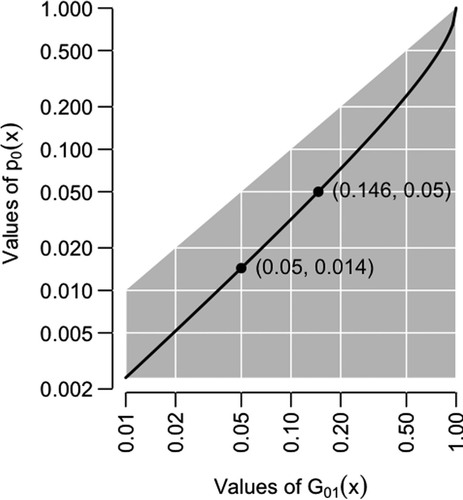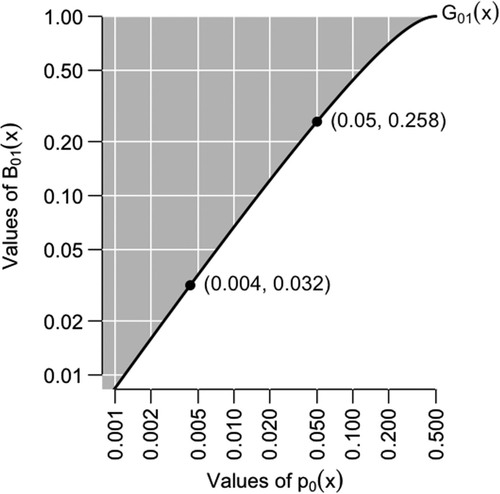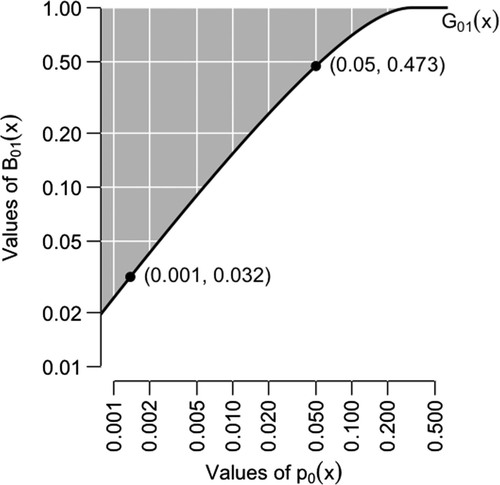Figures & data
Figure 1. The GLR and Wilks’s p-value. The gray region shows the possible values of p0 under the ET embedding model given in (Equation3(3)
(3) ), and the solid line the values of Wilks’s p-value, based on the asymptotic distribution of − 2log G01(X) under the null distribution.



